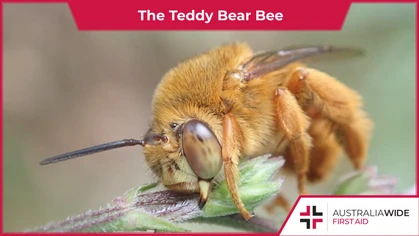The Elusive Tasmanian Cave Spider

Bites and Stings

The Tasmanian cave spider is a fascinating arachnid that is endemic and exclusive to the island of Tasmania. They live in dark, moist environments throughout the island, especially caves. Despite their small body size, their legs can span a whopping 18 centimetres. (Photo credit: Tasmania Parks and Wildlife Service)
The Tasmanian cave spider (Hickmania troglodytes) is a fascinating arachnid that is native to Tasmania, Australia. It is the last of an old Gondwana lineage of spiders, with its nearest relatives in South America. They are an important part of Tasmania's diverse and unique ecosystem, and are of interest to researchers studying the island's natural history. These spiders have a relatively long lifespan and may live for several decades. If you’re in Tasmania, you can sign up to our general or childcare first aid courses to learn more about identifying and treating spider bites. We also have locations across the rest of Australia.Appearance
The Tasmanian cave spider has several identifying characteristics that distinguish it from other spider species. Firstly, they have a shiny black body that can reach up to 2-3 centimetres in length. Despite this small body length, their eight legs can span up to 18 centimetres. The carapace of this cave dweller is reddish brown, while their abdomen is a dull and dark greyish brown. They also have the primitive pattern of four abdominal breathing organs, called book lungs, which are seen as four light-coloured patches on the underside of their abdomen. Males are smaller, though with longer legs that have a kink-like curve near the end of each second leg.Distribution and Habitat
The Tasmanian cave spider is endemic and exclusive to the island of Tasmania, where it is widely distributed. Specifically, they are found in caves and other dark, moist environments throughout the island, where they breed and hunt for prey. They can be found in other dark, cool, and sheltered habitats, from hollow logs to the undersides of bridges. They weave a sheet web, which can be more than a metre wide.Feeding and Behaviour
Tasmanian cave spiders hang on the underside of their sheet web, waiting for prey to fly, jump, or fall into it. Their prey include cave crickets, beetles, flies, other spiders, and millipedes. Their courtship and mating occurs from late winter to spring. The male spider approaches the female's web and uses his long front legs to beat against her while alternating with pauses or retreats. This ritualistic behaviour can last up to five hours and serves to pacify the female. The ultimate goal is for the male to grip the female's head in the specialised kink on the metatarsal segment of his second legs and pin her fangs apart to facilitate safe mating. Females subsequently guard their egg sacs until the spiderlings emerge roughly eight to ten months later.Danger and First Aid
Cave Spiders are not aggressive or harmful to humans. Bites are also infrequent, due to their habitat. However, if you are bitten, treat the bite with caution and in the same manner as a Redback spider bite.Final Thoughts
If you would like to learn more about providing first aid in the event of a insect bite or sting, book a First Aid course with us today. You can also learn how to provide first aid in an education and care setting.
Originally published at
https://www.australiawidefirstaid.com.au/resources/tasmanian-cave-spider
as part of the Australia Wide First Aid Articles Library









